Seahawks' New 'CLEO' Coverage, Part 3: Beaters, Perceived and Actual
The 2021 Seattle Seahawks ran a new pass coverage for their defense. Coach Pete Carroll is often thought of as a conservative figure, yet the defensive guru and his staff devised a contemporary solution to slow quarterbacks and offenses through the air: “CLEO” defense.
This was a middle field open, zone-matching, nickel pass coverage that suited Seattle’s personnel and compensated for how offenses looked to move the ball versus the Seahawks. With multiple reports of Carroll desiring a more aggressive and attack-minded 2022 defense, "CLEO" should be here to stay in Seattle's defensive system under new defensive coordinator Clint Hurtt. This four part series will cover CLEO's overview, 2021 application and future.
Part 1: Overview and CLEO Past
Part 2: 2021’s Successful CLEO Application
Part 3: 2021's CLEO Beaters, Perceived and Actual
Beating the Seahawks’ CLEO structure is, and was, possible - like any football defense. The successes and failures of 2021 offenses versus CLEO prove insightful.
Run Fit
One obvious, low-risk approach for offenses was to try run the football. A major benefit to middle field closed pass coverages is how they allow the defense to put an extra defender into the box to defend the run. No matter how many blockers the offense places in the box, the defense can always have one more. That’s a big reason why the NFL, "Legion of Boom" Seahawks included, favored this MFC approach - until recently.
With middle field open deals instead using this player as the second high defender in the structure, the extra run defender advantage is lost. The defense is left one man lighter versus the run.
Involving the cornerback in the fit is one way in which two-high defenses try to get the numbers back. Indeed, with 2021 CLEO, the carryover of the Kiffin-Carroll CLEO definition from years past was visible in that the cloud cornerback was still technically assigned the forced responsibility versus the run.
This was especially important in CLEO given that the Seahawks needed to keep the nickel, aligned on the same side of the coverage as the cloud corner, as a pass-first player out of the run fit. This freed the nickel to match the No. 2 receiver in his vertical hook technique.
This 2nd and 7 run fit versus the Rams demonstrates this relationship. It also shows one of the front mechanics CLEO was paired with to make fitting the run easier from the two-high structure. They cheat the run fit numbers.
The Rams shifted from their 11 personnel into a two d-gap look with the ball in the middle of the field. Seattle had already set their 3-technique, Poona Ford, away from the matching Ugo Amadi. Jordyn Brooks aligned in the strong C-Gap and Bobby Wagner in the strong A-Gap. Amadi was faced with a B-Gap bubble.
To allow Amadi to match Kupp first and foremost, Seattle played very heavy up front from their wide alignments. Play-side defensive end Rasheem Green slanted inwards to the tackle. Ford played heavy on his guard.
The crucial work was done by Al Woods. At nose tackle, Woods slanted from the A-Gap through the guard. Woods’ presence managed to beat the A-Gap double before winning into the B-Gap. While all of this was happening, Amadi was playing his pass-first assignment on Kupp.
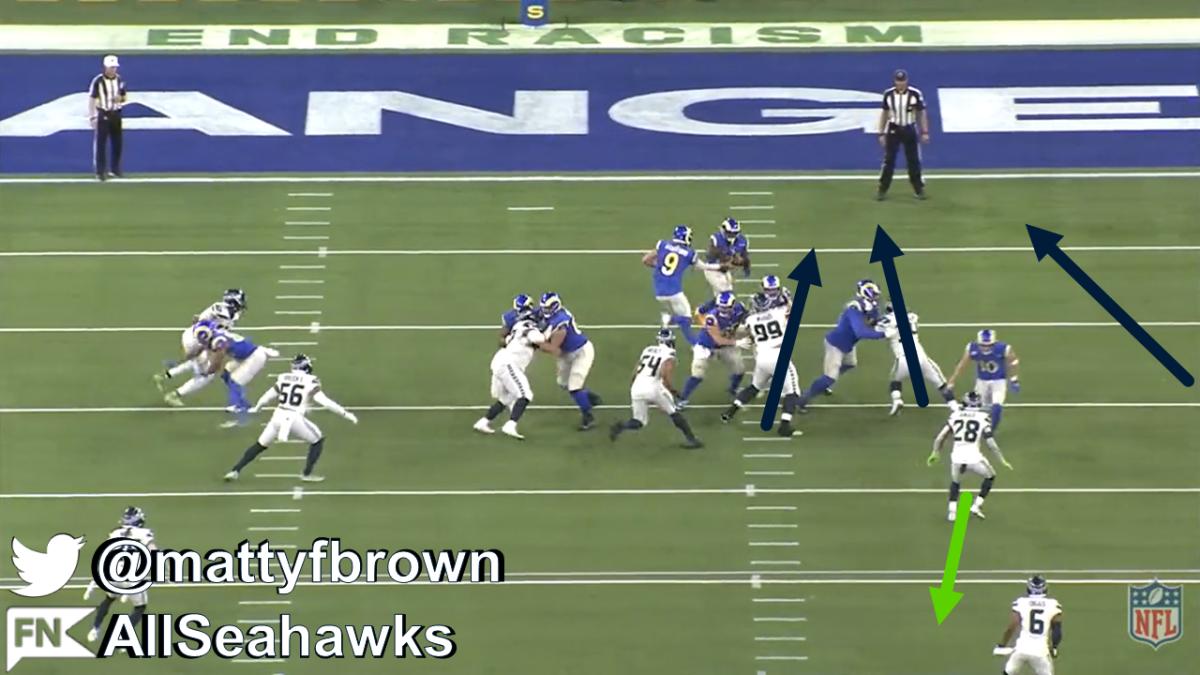
To make Green’s heavy play on the tackle right, cloud corner Bless Austin triggered in his force assignment once he saw the tackle block Green outward. He set the edge of the defense, beating Odell Beckham’s perimeter block to the point.
On the mid zone concept, running back Sony Michel saw the heavy presence of Woods and Green ruining the B-Gap, with Wagner running clean through the backside A-Gap. The back tried to bounce outside Green, where Michel would have been met by Austin, at which point Green shed his block and made the first hit. He was quickly joined by Austin and Woods for no gain, bringing up 3rd and 7.
— Ultra Rare Tape (@UltraRareTape) January 20, 2022
This cornerback contribution was a secondary force player on the vast majority of snaps, the ones where there wasn’t a tight end or D-Gap to their side and the defensive end could then provide the primary force. This was due to Seattle playing the cloud to the strength, meaning the corner was often in a situation where they had to play coverage first due to the offense’s formation.
Seattle expected the strong safety, playing quarters technique from the two-high look, to show up quickly in the run fit. If the Seahawks were running CLEO with their four-down front and had the tight end to the strong safety’s side, the 3-technique would be set there and the strong safety would fit the play similar to over Cover 3 strong buzz coverage, filling the A-Gap.
You can see on this 2nd and 10 Packers example that exact scenario play out pre-snap. Brooks identified the tight end to the quarters side of the coverage. He alerted Wagner, who bumped his run fit to the B-Gap.
Rather than asking Adams to fill into the A-Gap, the Seahawks brought their strong safety time and space with another front tool. On this occasion they pirate stunted their 3-technique and end. This kept Brooks clean fitting the C-Gap and allowed Adams to fall back his fit too.
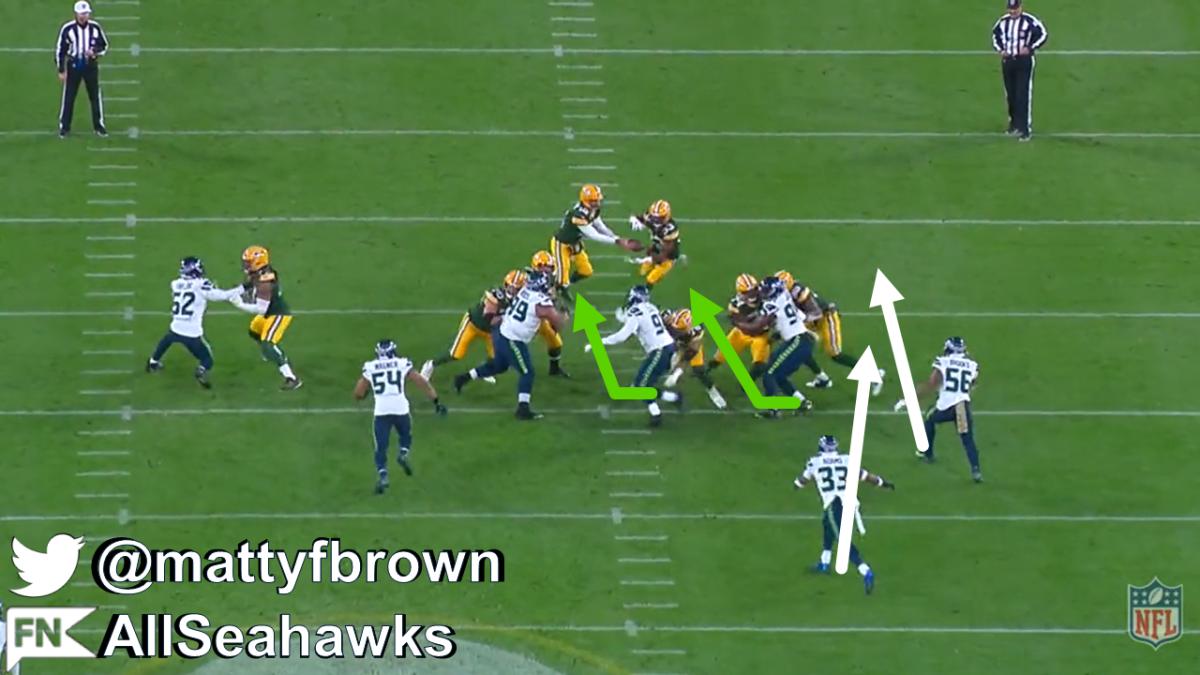
Aaron Jones on the tight zone concept saw L.J. Collier in the A-Gap and Green shrinking down into the B-Gap. Jones went for the bend read. Brooks and Adams rocked back untouched to make the tackle for minimal gain. For Adams, this was a simple case of seeing his primary key, the tight end, squeeze down with a low hat on Green’s movement. From there, the strong safety just flowed to the football off the DL movement. This two-yard run brought up 3rd and 8.
— Ultra Rare Tape (@UltraRareTape) January 20, 2022
This is a similar pirate example versus the Packers in a 2nd and 2 situation. Poona Ford lost early at 3-technique, with no lateral movement into the A-Gap. Given Brooks was looking to fall back into the C-Gap and Adams was hoping for similar versus the tight zone, Wagner filling his B-Gap was likely aware of the open A-Gap. The tight run only got two yards, but it was enough for the first down.
— Ultra Rare Tape (@UltraRareTape) January 20, 2022
Asides from front movements, Seattle’s front techniques also aided their CLEO fit: The Seahawks’ no bubble nickel bear front of “falcon” helped Adams, or the strong safety, fit the run from CLEO’s two-high depth. The strong safety was kept clean and with increased time by the one-on-ones up front. Furthermore, it was the big end type that often went to Adams’ side - given Adams aligned weak and the LEO-3-technique combination played to the strong side.
This big end was often a mirror stepper: if a tight end was on Adams’ side, creating a D-Gap, Seattle would bump the defensive lineman into a 4i-technique, aligning on the inside shoulder of the tackle. The end would then play one-and-a-half gaps, mirroring the tackle's release. This granted Adams further time and room.
On this 1st and 10 versus the Packers’ tight zone, you can see Green mirror step with the tackle, keeping Adams clean. The guard-center combination went to double head up nose tackle Woods. And the tight end looked to kick out Brooks on the edge. As this developed, Adams was able to hold his depth until he confirmed the ball had been handed off to Jones.
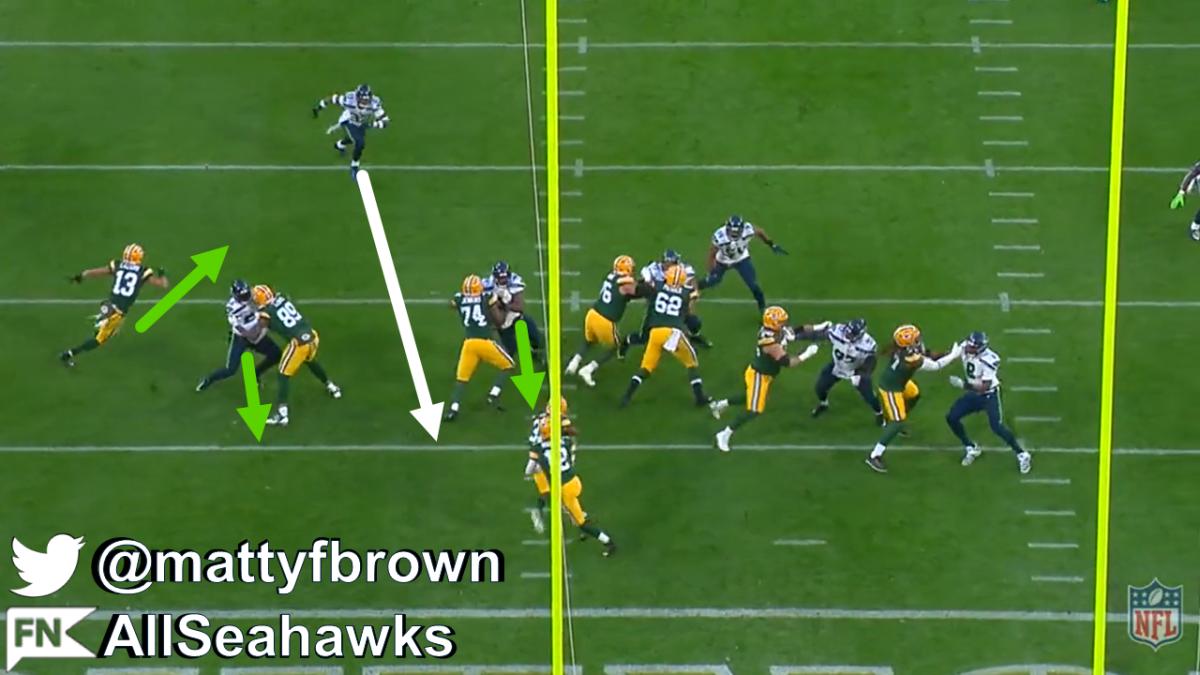
Jones saw Green heavy in the B-Gap and tried to cut back off his tackle’s wash. Adams triggered aggressively downhill, smashing the crack back block of Allan Lazard with a violent shoulder before mauling Jones. Outside cornerback D.J. Reed was able to join the fit and resulting tackle after correctly crack-replacing. Green Bay got a hard-earned three yards.
— Ultra Rare Tape (@UltraRareTape) January 20, 2022
The Arizona Cardinals in week 18 attacked CLEO’s quarters safety well in the ground game.
This Y-off look with orbit motion to strong safety Josh Jones created a numbers problem for the Seahawks defense. The tight end block going across the formation with the orbit man and threat of Kyler Murray keeping the football saw Brooks look to force the play. Critically, it widened Jones and held him deep.
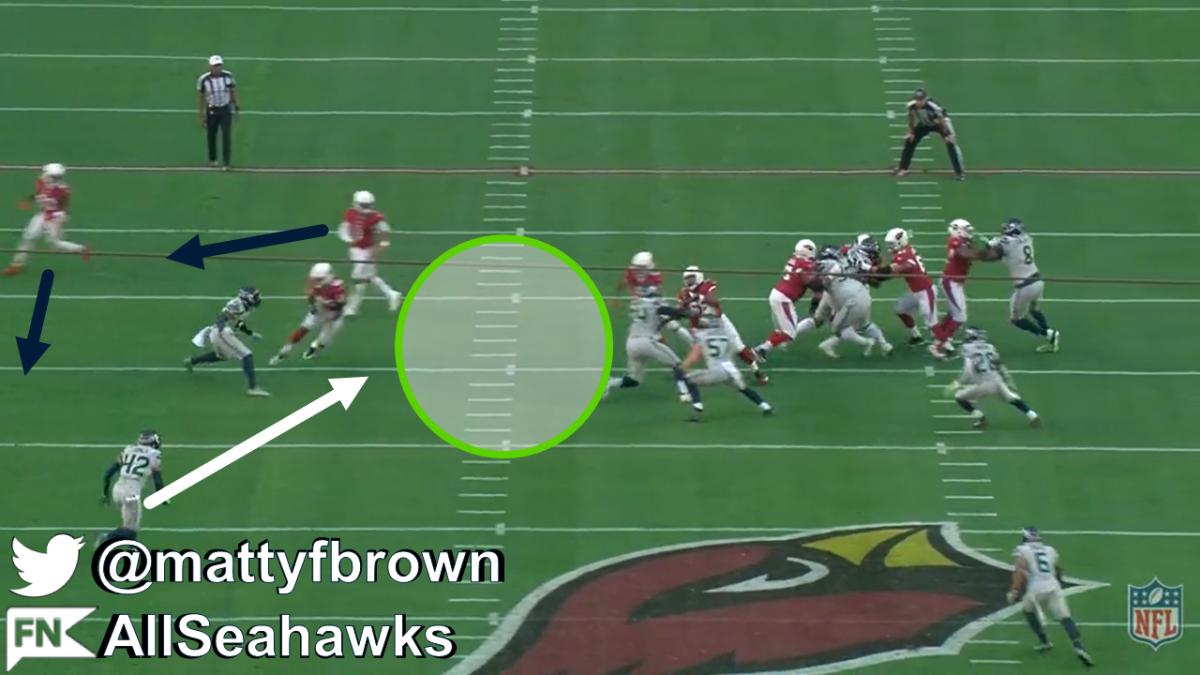
Seattle’s two off-ball defenders in the core, middle linebacker Cody Barton and nickel Ugo Amadi, were left in a tricky flowing position. Barton went from A-Gap to C-Gap with the tight end’s block, while Amadi needed to go from C to A.
However, play-side 3-technique Robert Nkemdiche got stuck in the A-Gap, meaning there was a lot of space in the frontside B-Gap as the wide run went in that direction. Amadi therefore stayed wider for this.
Barton could have fallen back quicker but he was conscious of the wide run and an opening backside B-Gap. That was after big end Green padded back on the tackle after his guard departed quickly before winning into the C-Gap with the back’s cut. Nevertheless, the run went for six yards simply because there was too much space with Jones late into the fit.
— Ultra Rare Tape (@UltraRareTape) January 20, 2022
This nine-yard run did suffer from a slow Josh Jones trigger, at least when compared to Adams’ impressive beating of a crack back block. However, the guard-tackle counter concept with the receiver crack back on the quarters safety was tough on CLEO.
Nkemdiche stopped the second puller, the backside tackle. Barton flowed to the first puller, the guard, and spilled the ball. Josh Jones’ eyes seemed to be in the wrong place for fitting the C-Gap off the tight end. The strong safety was tight in his path and was cracked further away from the play. Sidney Jones did look to crack replace his safety, but he was a tad late to the fit also.
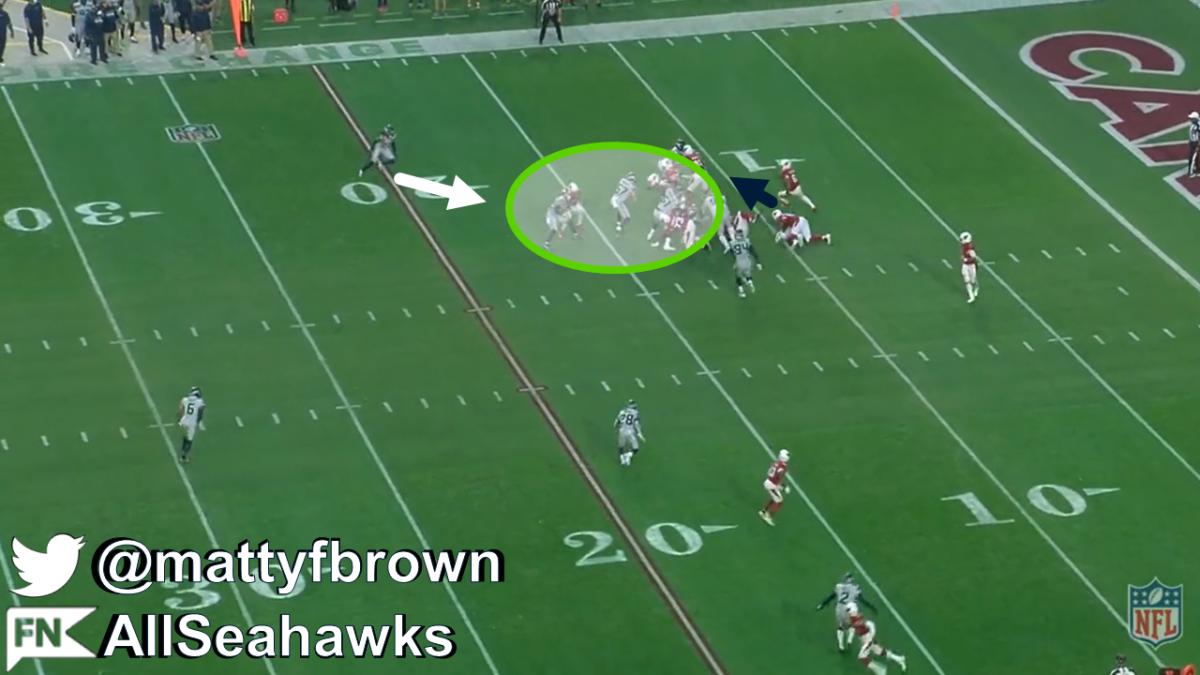
— Ultra Rare Tape (@UltraRareTape) January 20, 2022
One way CLEO's fit could be exploited via run action rather than actual run is trying to suck the strong safety up by showing run and then throwing the ball to dig window behind off play action. It is a relief that third level RPOs are not a thing in the NFL due to the pro game’s different officiating.
Beater Honey Hole
With one side of CLEO coverage being Cover 2 with a vertical hook match, the most obvious beater through the air would be the honey hole pass - a throw into the space behind the cloud corner yet beneath and outside the deep half safety. Perhaps surprisingly, offenses didn’t experience much honey hole success.
On this 3rd and 11 versus the Rams, the Seahawks got deep into their drops and clamped the passing concept. On the Cover 2 side, cloud cornerback Jones picked up the sail route from Amadi and the combination designed to exploit the coverage’s space. Quandre Diggs in the half would have got to the fade if Stafford had looked that way.
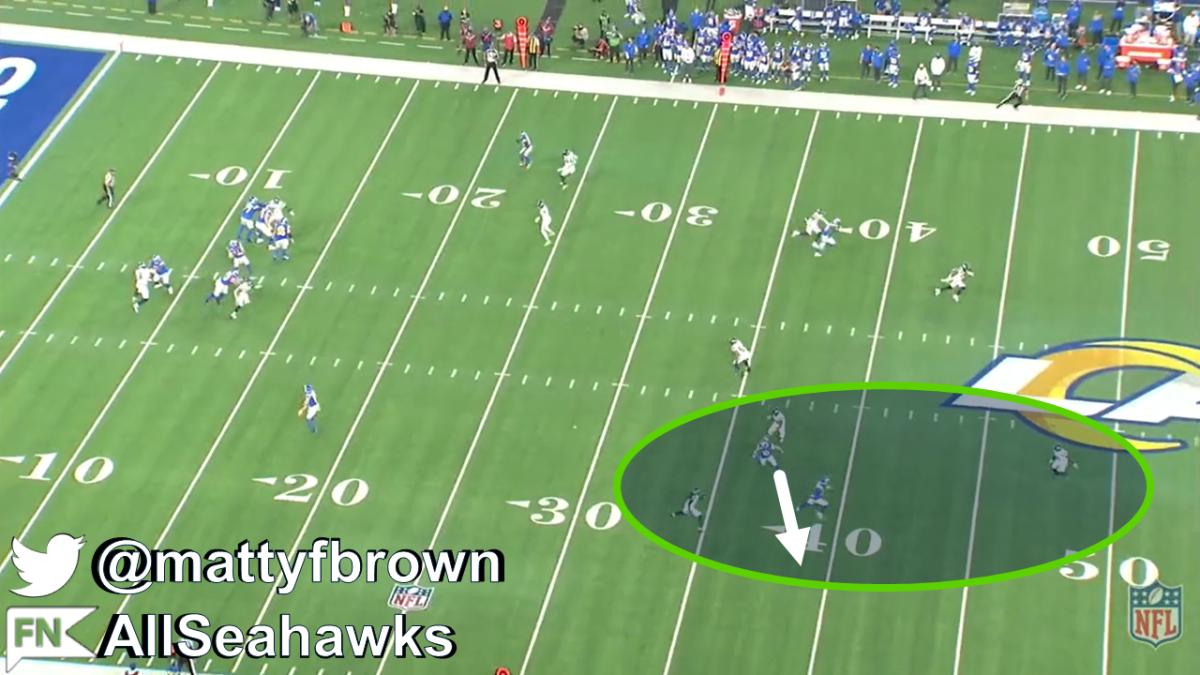
Stafford instead looked to attack the quarters side and target his dig-go route. Even with the double move, Seattle basically got double coverage on the route with sound leverage from Austin trailing outside and Neal working over the top. The pass fell way incomplete.
— Ultra Rare Tape (@UltraRareTape) January 20, 2022
On this 3rd and 7, the collision of cloud cornerback Sidney Jones, playing a catch technique, disrupted the release of the outer most receiver inside and down. Jones then flipped his butt to the sideline and expertly looked up the No. 2 receiver, before sinking with No. 1’s vertical route. Stafford looked elsewhere after a quick check of this side, but if the quarterback had continued into this area Seattle would have had the route doubled.
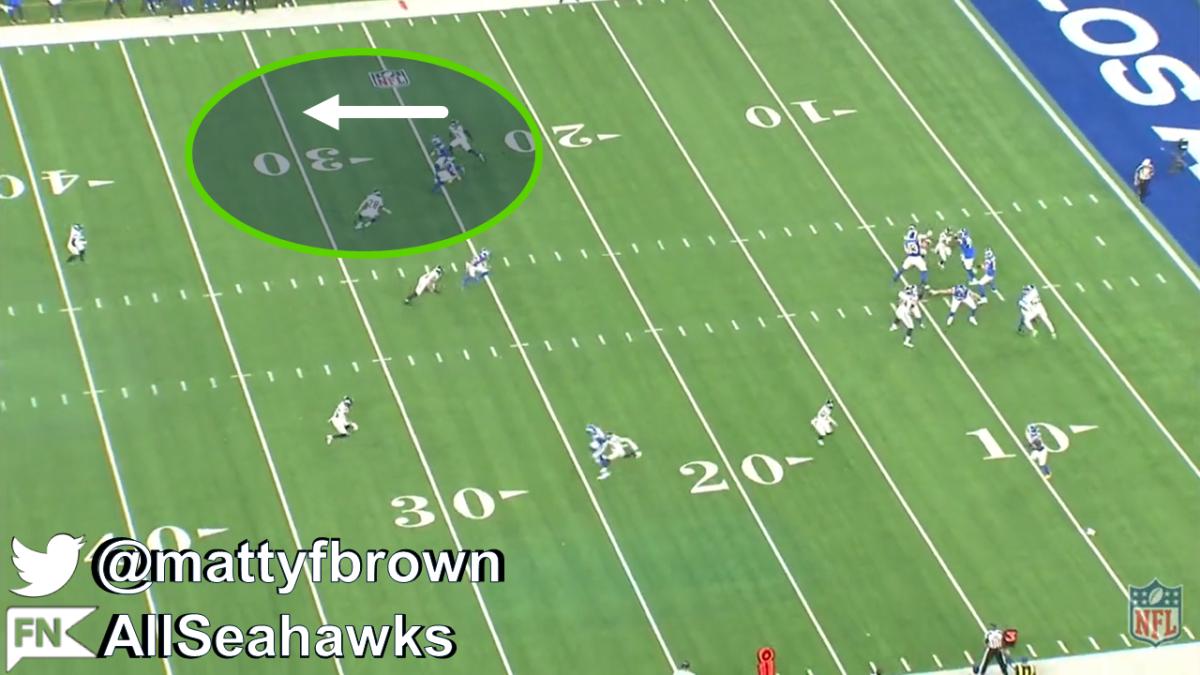
Stafford instead wanted to attack the dig route to the quarters side of the coverage. However, the Seahawks got excellent rerouting from Austin to this route, upsetting the timing. Meanwhile, Neal lurked in his quarter in the ideal leverage. Stafford was forced to clutch the ball and was brought down by pass rusher Carlos Dunlap for the sack to get off the field.
— Ultra Rare Tape (@UltraRareTape) January 20, 2022
To the Cover 2 side, the Cardinals employed a similar concept although with the No. 3 receiver running into the high hole. From press, Reed denied the outside release in his squat Cover 2 technique before flipping his hips to sink. Meanwhile, Amadi was highly aware in his vertical hook technique. He took the No. 3 receiver as the new No. 2 receiver following the distribution, merging underneath the corner route.
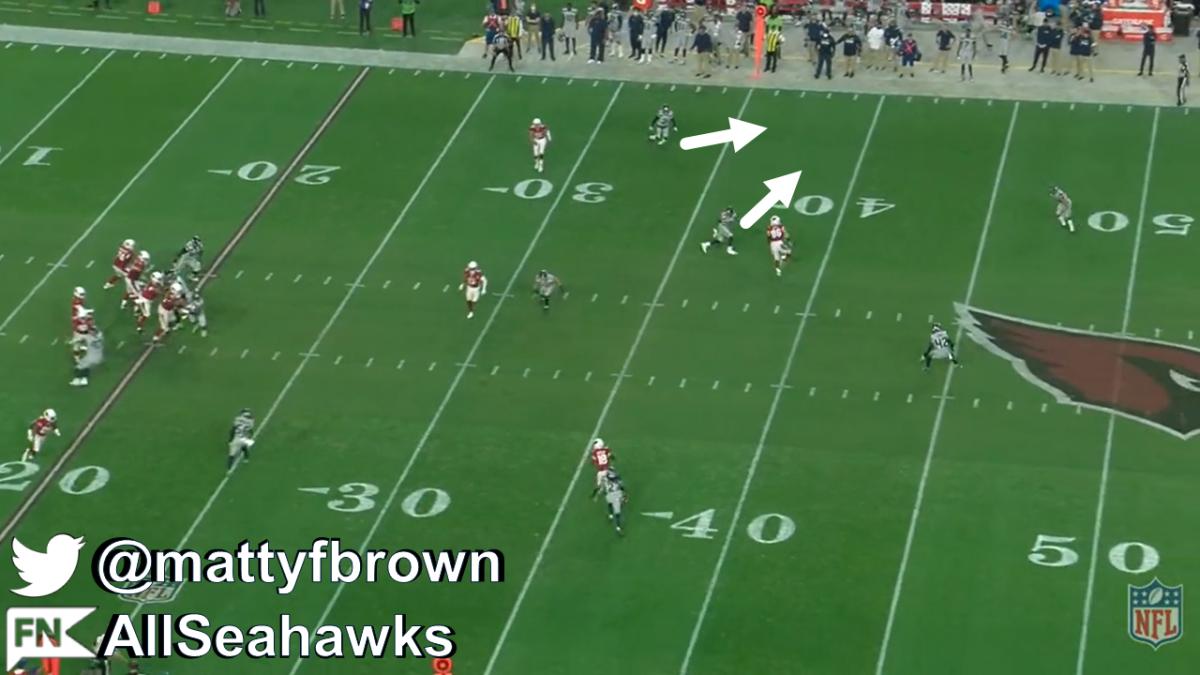
As it was - once more similar to the Rams example - the quarterback wanted to attack the quarters part of the coverage. With Seattle poaching their safety to the other side because of the detached trips look, this was a pure one-on-one between Jones and A.J. Green. From his bail technique, Jones took an excellent path to the in-cut and forced the 1st and 10 pass breakup.
— Ultra Rare Tape (@UltraRareTape) January 20, 2022
A more effective way to attack the Cover 2 side was to deploy the No. 1 receiver on a return or whip route. The initial outside stem of the route commands the full attention of the cloud corner. With the timing synced up by the outside stem, the route then breaks inside to space vacated by the nickel run off in his vertical hook match.
This play is a Week 5 example of the coverage with the less experienced Marquise Blair playing the nickel. Nonetheless, it is easy to see the corner route coming open outside of Blair and behind Reed. Stafford looked at the underneath, the under route to the inside of Reed and beneath Blair.
This stressed Reed low and inside, accentuating the room behind to hit the corner route deep and outside. Diggs was also slow getting over the top in his half, again likely due to the relative infancy of the coverage at this point in the season.
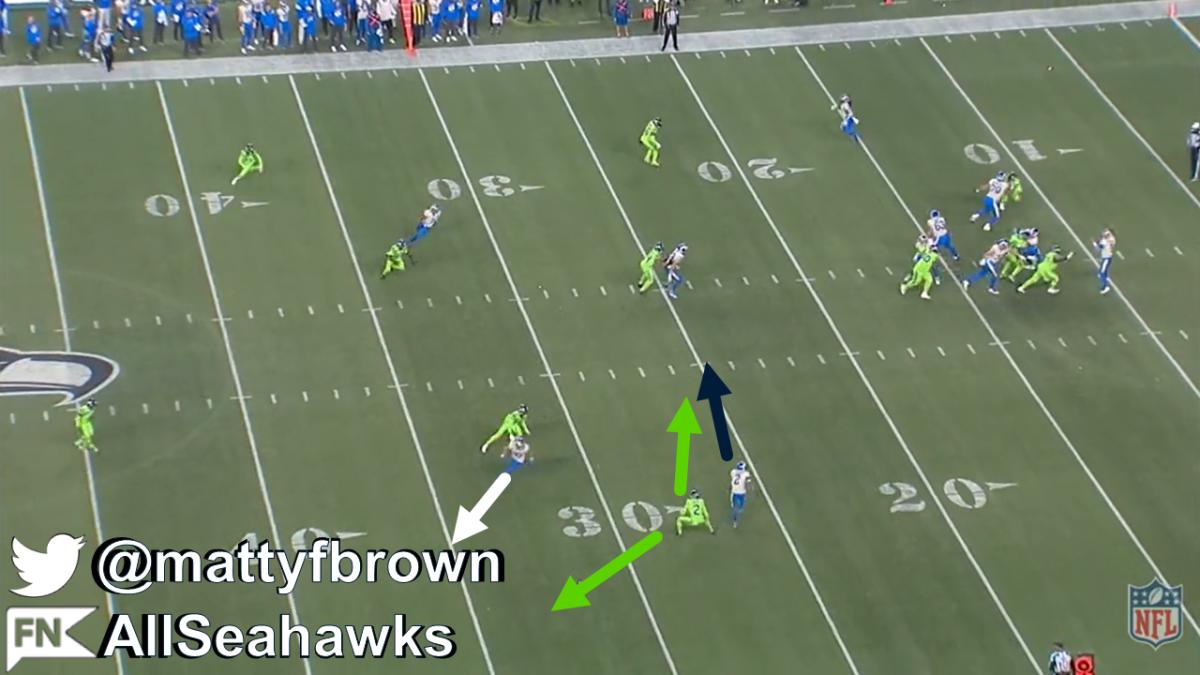
Thankfully for Seattle, pressure from Ford hurried Stafford’s throw and the pass had too much on it for the catch.
— Ultra Rare Tape (@UltraRareTape) January 20, 2022
Kyle Shanahan’s 49ers attack clearly had noted this as a beater for their Week 13 match-up with Seattle’s CLEO.
First we have this 2nd and 15, with Reed playing an off-cloud technique looking to get his butt to the sideline. With Amadi run off by the vertical route of the No. 2 receiver, Garoppolo was able to complete the return route pass into the space for eight yards - and a very unfortunate shoulder injury to the poaching Adams.
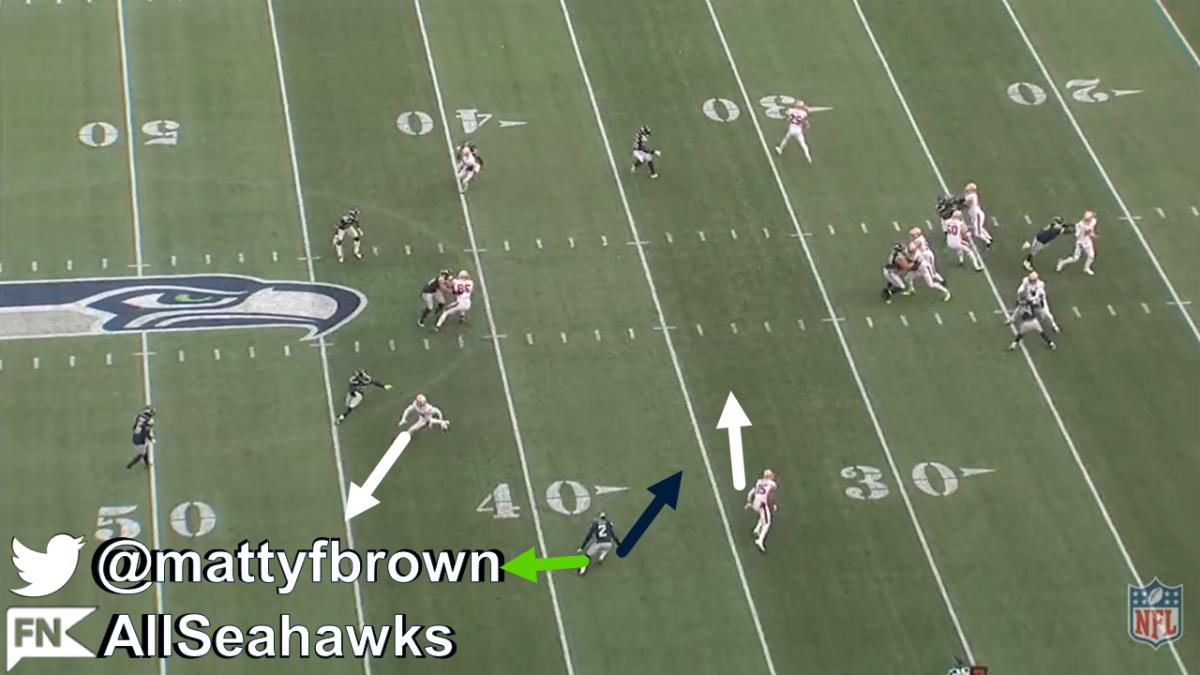
— Ultra Rare Tape (@UltraRareTape) January 20, 2022
Playing a press cornerback to the Cover 2 side had its advantages for Seattle. However, the squat technique did mean that the field of vision was less extensive and that there was less time to react to routes. The overall consequence was that the space behind the cloud corner grew more susceptible.
Shanahan’s return concept went after that. Jones jammed and rode the wide inside release of the No. 1 receiver. The cornerback then had vision on the quarterback and the #2’s return route into the flat. Jones covered this route tightly on the 1st and 20, leaving the inside release as the new No. 2 for Amadi to match.
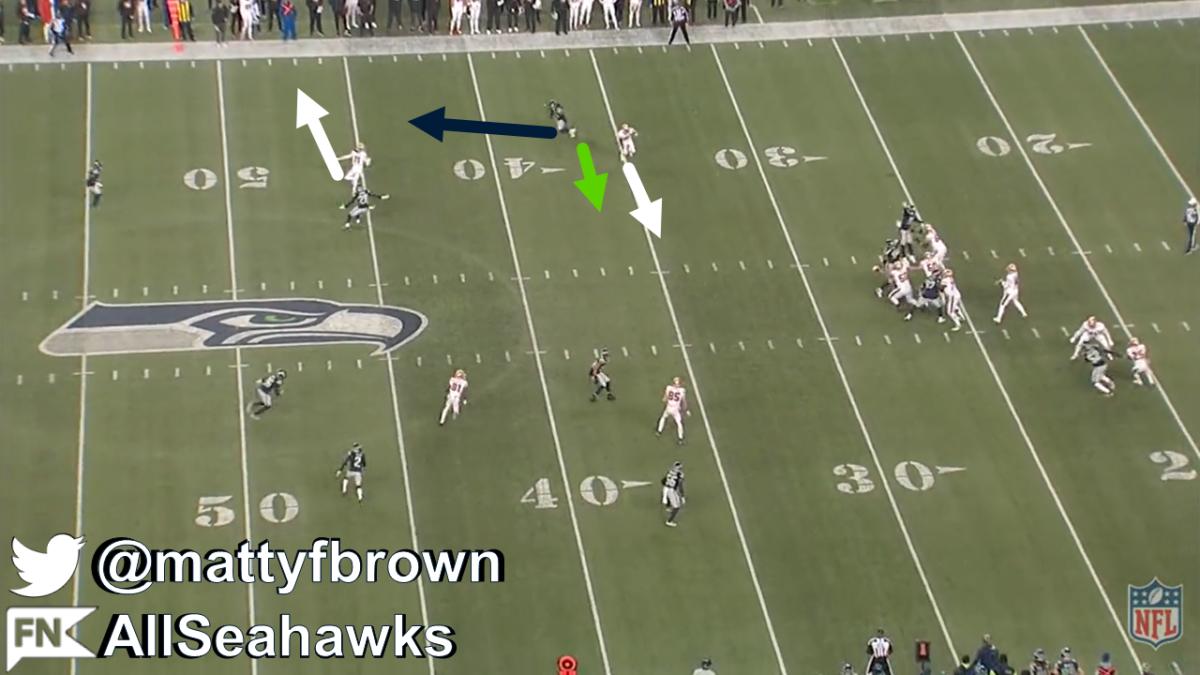
Yet Amadi was out-leveraged to the corner on this route. On top of that disadvantage, the nickel clearly expected more outside help from Jones to this route. Brandon Aiyuk caught the 18-yard pass in the space of the coverage.
— Ultra Rare Tape (@UltraRareTape) January 20, 2022
In Week 17 versus the Lions’ same concept, Amadi was more aware of the threat. As Tim Boyle looked to throw the ball, Amadi was in optimal in-phase position to trail the corner route in his vertical hook match.
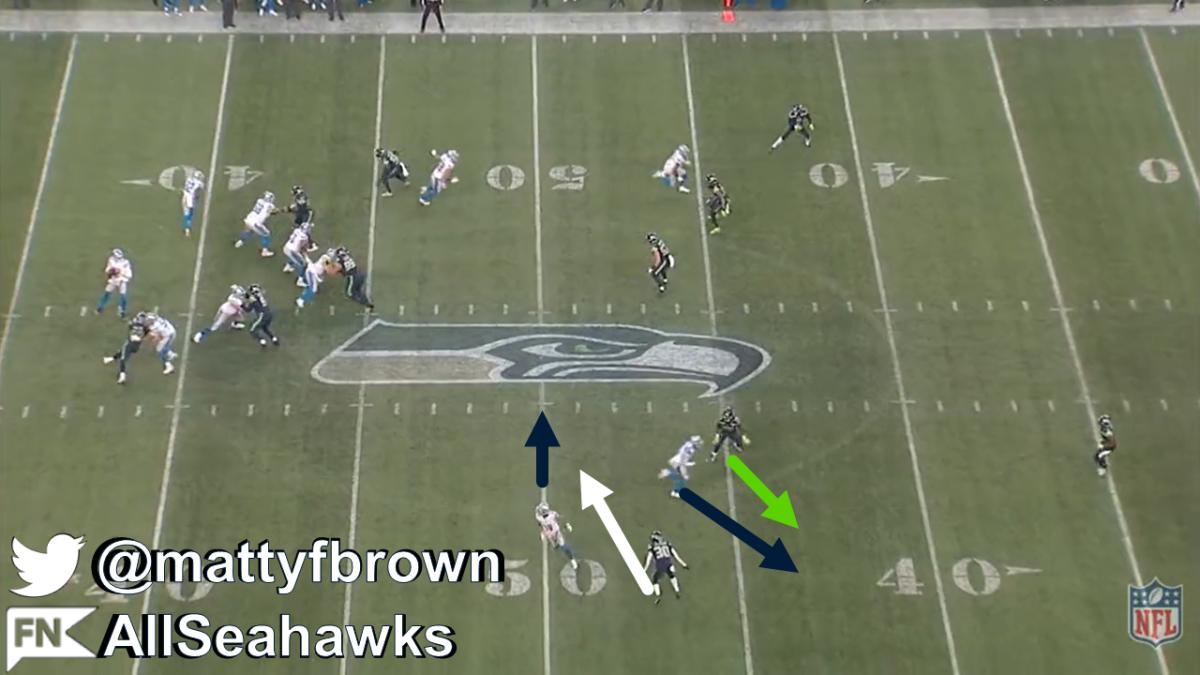
To Boyle, this looked like a horrid throw into Cover 2 man. Meanwhile, outside corner Mike Jackson waited patiently outside with the stem before breaking in with the throw for the deflection.
— Ultra Rare Tape (@UltraRareTape) January 20, 2022
Beater Back Weak
We have already seen offenses that tried to dissect the quarters side of the Seahawks’ coverage by attacking the cornerback. There are times where this part of CLEO was essentially one-on-one underneath. This was exposed most brutally by the New Orleans Saints with Alvin Kamara.
The Saints’ 3x1 formation saw Seattle respond in the pure pass situation with a dime + coverage that matched Ryan Neal on Kamara. The running back’s choice route had the option to break straight, outside, or inside.
Yes, Neal overstepped to the outside. Yet, really, the safety was on an island in the underneath with this coverage call. Wagner and Amadi were run off frontside with their eyes turned away from the ball. Reed man-turned in his quarter on the backside. Neal had no help to his right or left.
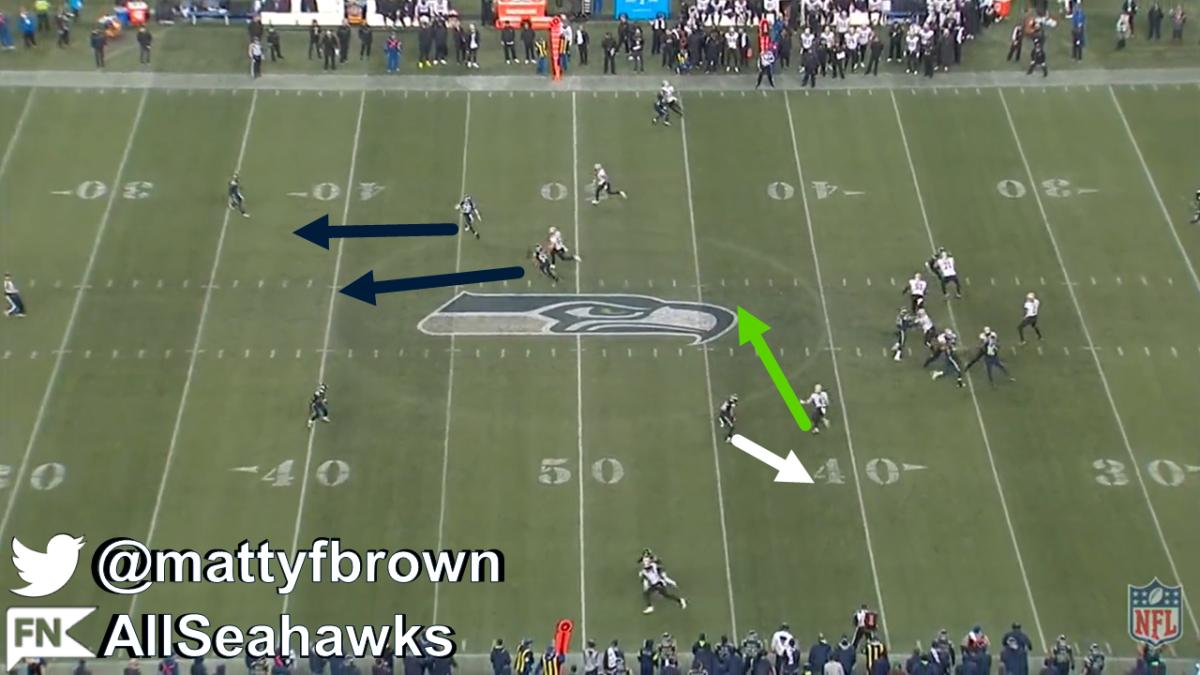
Kamara therefore caught the ball and found himself in serious space. New Orleans came away from the 1st and 10 situation with a gain that kickstarted their two-minute drill.
— Ultra Rare Tape (@UltraRareTape) October 28, 2021
The solace the Seahawks can take from the Kamara situation is that there are few backs in the league who pose enough of a mismatch to beat a dime safety or Brooks. Seattle adjusted with a different, man-matching coverage to remove Kamara in the second half of the game.
Beater Quick Game Fast No. 3 and Stick
Releasing a fast No. 3 receiver into the pattern on quick game style concepts did stress CLEO’s spacing.
In this Lions 1st and 10 example, the Seahawks pushed their coverage over well, reacting to the fast #3 into their cover 2 part. Neal poached the special route. Barton expanded. Amadi approached the #1’s curl. And Jackson lurked, ready to rally into the flat.
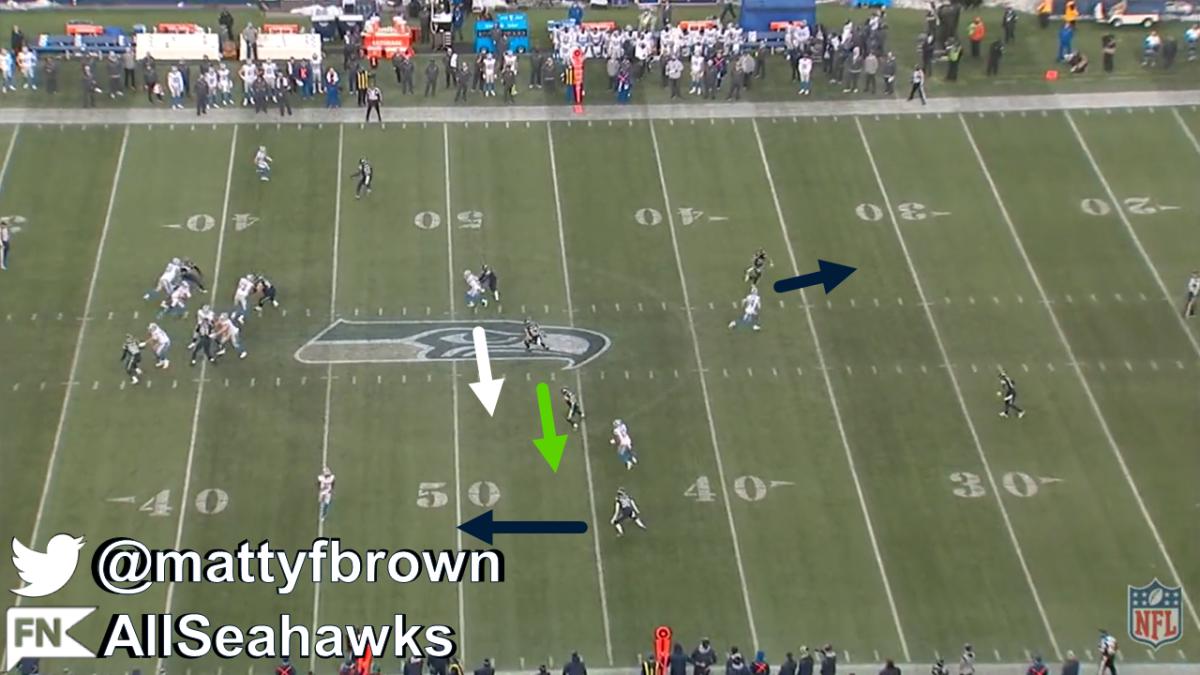
Boyle declined his three-man combination and looked to work backside. He clutched faced with Reed’s tight quarters defense and ended up throwing a messy incompletion.
— Ultra Rare Tape (@UltraRareTape) January 20, 2022
However, in this CLEO call versus the Cardinals, possibly due to the fake ball work of Murray frontside, Barton did not push with the fast No. 3 to the quarters. Brooks as the quarter-flat player pushed to the running back. Reed looked to get to the No. 2 before leaving the dig route to his quarter help of Josh Jones.
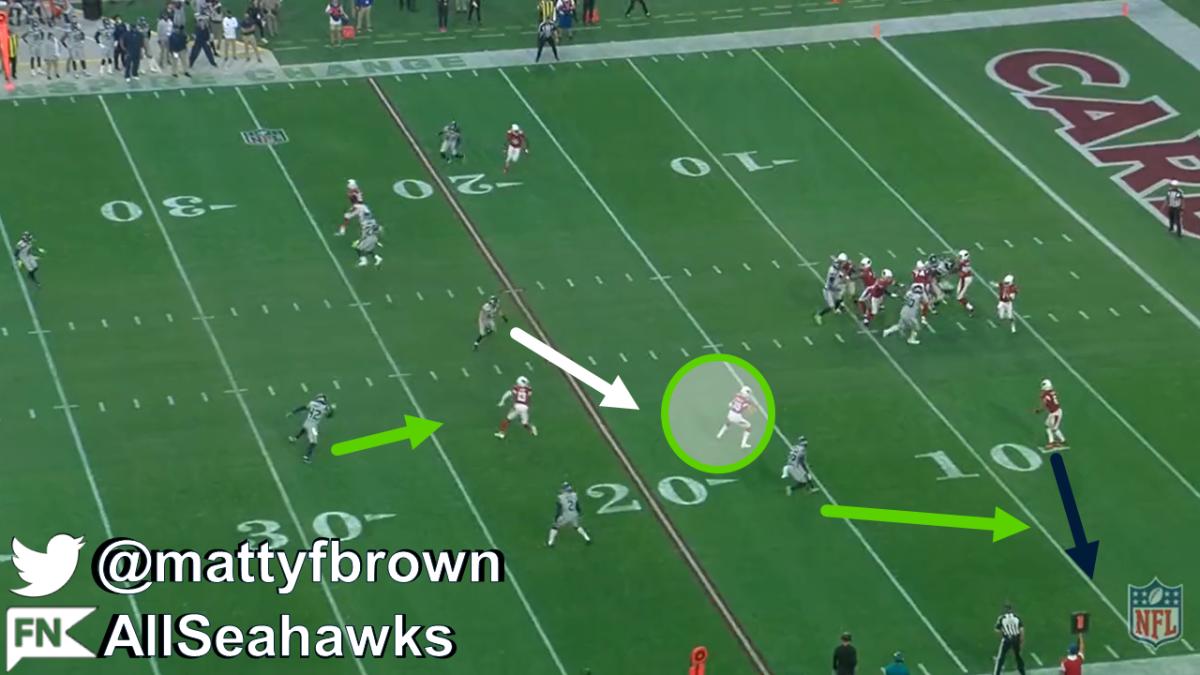
The issue was Barton needed to push to the hitched choice/arrow route of the No. 1 receiver. Instead, Barton found himself doubling the dig. The pass to the opening was complete for nine yards on the 2nd and 11.
— Ultra Rare Tape (@UltraRareTape) January 20, 2022
A difficult quick game concept for the coverage is stick. Here, even with Marquise Blair playing his vertical hook technique with more aggressive eyes, it is an inevitability of CLEO that the No. 3 receiver hook linebacker is matched up in inside leverage with a detached No. 3.
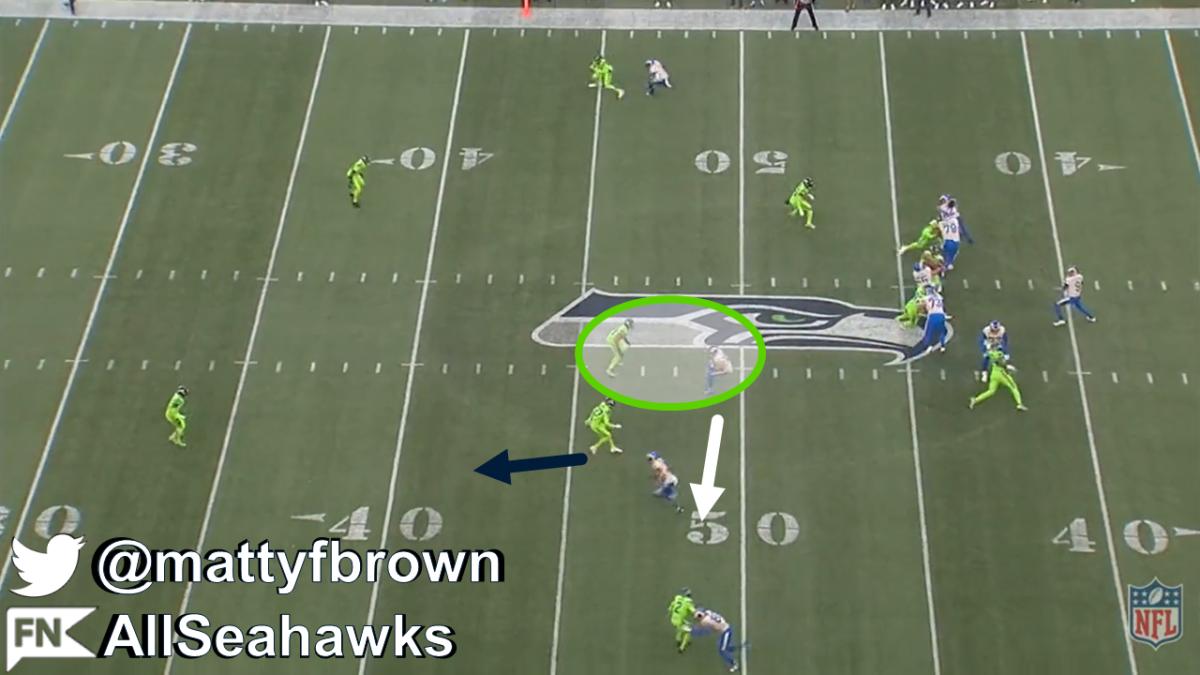
In this case, Kupp attacked the leverage of Wagner before breaking outside into space that Blair reduced but could not close. Working the No. 3 receiver hook player outside, to the Cover 2 part is an even more effective strategy when you factor in the way the nickel would usually run with a vertical stem from his No. 2.
— Ultra Rare Tape (@UltraRareTape) January 20, 2022
The condensed split of this Packers stick concept along with the lack of help, especially given Brown’s off quarter, meant quarter flat defender Brooks simply had too much space to cover to the quarters side of CLEO.
— Ultra Rare Tape (@UltraRareTape) January 20, 2022
This Cardinals catch was a similar deal to the above. This time Brooks stayed on the inside route and let the flat route run from the condensed split. Then Brooks expanded and the catch was made. Arizona got to 3rd and short.
— Ultra Rare Tape (@UltraRareTape) January 20, 2022
Beater Y-Cross
Finally, we have a rare vertical beater of CLEO. Y-Cross is hardly groundbreaking, yet it hurt CLEO’s rules here. The vertical hook Amadi followed Murray’s short drop and look to his No. 2 out route, throttling down.
Murray came back to his crossing route from the opposite slot, which No. 3 receiver hook player Barton had merged well with underneath along with quarter safety Josh Jones squeezing the pattern across the field.
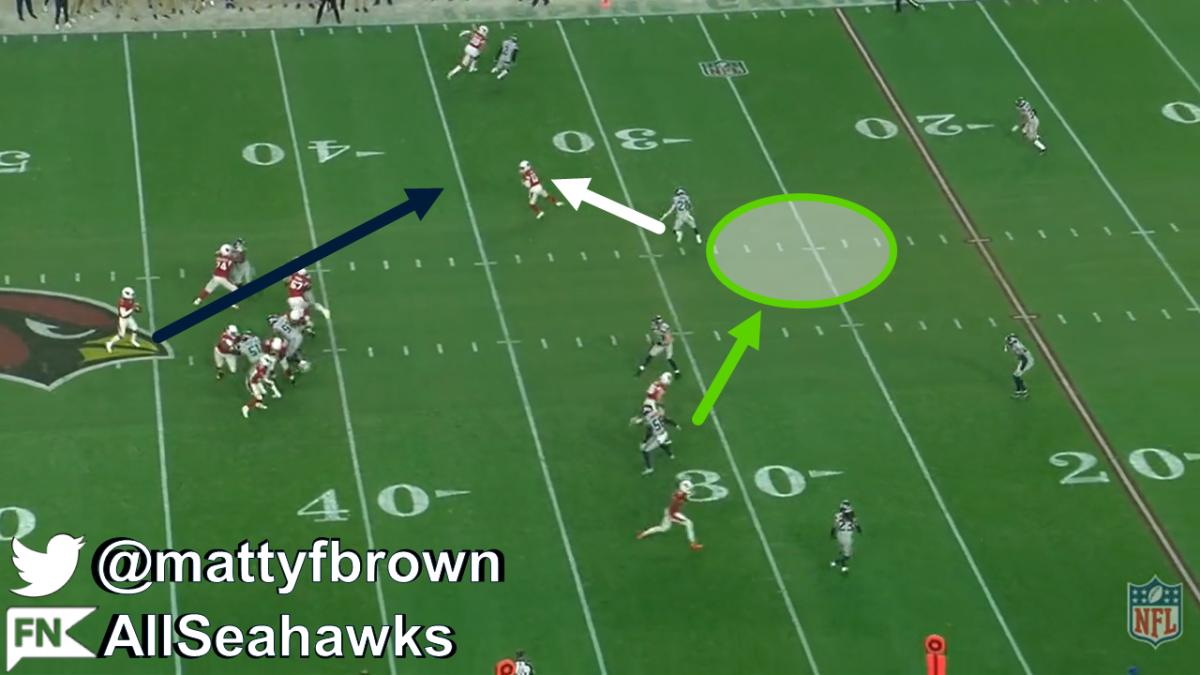
Barton, though, expected to be able to pass the route to a deeper Amadi - especially given Amadi’s No. 2 was in the flat and not vertical. Instead, Murray was able to complete the pass, hitting Zach Ertz in the space for 15 yards.
Barton tellingly had words with Amadi following the play, a tough one to give up in the heavy pass situation.
— Ultra Rare Tape (@UltraRareTape) January 20, 2022
Offenses are likely to dress up these established beaters in more effective ways more often. That’s the nature of football scheming and NFL offenses. That does not mean the Seahawks should discard CLEO - or the same concept under a new name - in 2022. On the contrary, 2022 is likely to be an extension of CLEO - along with added complimentary coverages and tools. That’s what the fourth and final part of this CLEO series will explain. They’re just getting started and can brush up on their 2021 weakness.
